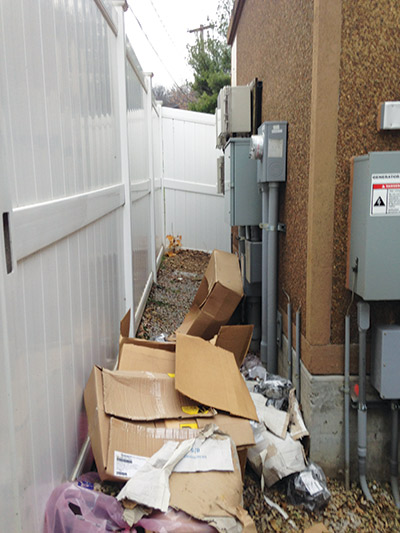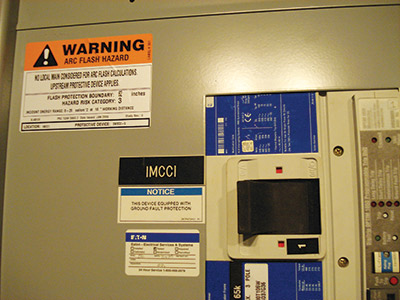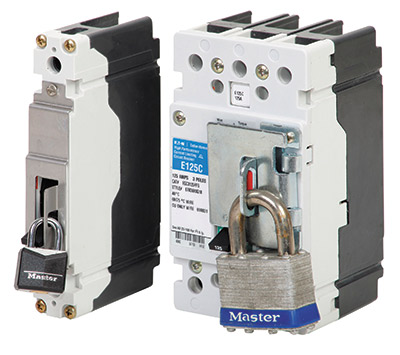The National Electrical Code (NEC) is a document that seeks the practical safeguarding of persons and property from hazards arising from the use of electricity. We all too often forget about how important theNEC is to those working on, in and around electrical equipment. I have, unfortunately, attended many State Code adoption hearings where discussions of delaying adoption of the NEC occurred and too often hear discussions of the cost of the provisions within these requirements or even the cost of buying new books and conducting training as excuses for ignoring safety. The most disappointing experiences, in my book, are the discussions that never happen as states drag their feet and take a casual approach to NEC adoption — yet another way to achieve, indirectly, a delayed adoption of requirements that are there to save lives and property.
The stimuli for today’s topic are those code adoption hearing meetings I’ve attended which were consumed with these discussions of delayed adoption of the NEC. In combating this effort, we naturally raise the benefits of the solutions contained within the document, using AFCIs, GFCIs, tamper- resistant receptacles, and labeling as examples of the safety provisions of the code that work to save lives. What we tend to overlook are all of those examples where the NEC works to ensure safety for those who work in and around electrical equipment. Some of these requirements don’t require electrical products such as those listed above but rather address such relatively simple steps that need to be taken for safety including but not limited to the layout of a room for emergency egress and ensuring panic hardware on doors for exit. The NEC offers a lot more than reduced property damage and safety of those that reside is a structure; the NEC offers value to those who work on electrical systems. The NEC is an installation code that includes provisions from which the electrical contractor and inspector benefit. These provisions exist in the system for years after the structure is built and in operation.
Because most of us live in the world of codes and standards, when it comes to electrical safety for the worker, we automatically migrate to NFPA 70E, Standard for Electrical Safety in the Workplace, but that’s not where we should stop. As noted above, the NEC includes many provisions important for the electrical worker and complements the efforts of NFPA 70E. Let’s explore this a little further to understand how these documents complement each other.

Photo 1. Workspace: designing adequate work space into the project is important to ensure those who come later, that have to work on equipment, are afforded the space needed to ensure work is performed safely. It is also important that owners keep the space clear of clutter.
Installation Code vs. Work Practice
First, let’s talk a little about the differences between NPFA 70 (NEC) and NFPA 70E, Standard for Electrical Safety in the Workplace.
NFPA 70E is a “standard” that addresses electrical safety related work practices for employee workplaces that are necessary for the practical safeguarding of employees relative to the hazards associated with electrical energy during specific activities, which include but are not limited to installation, inspection, operation, maintenance, and demolition of electrical conductors and equipment. This standard is not an installation requirement. NFPA 70E is not enforced by the electrical inspection community but rather more often than not is enforced, after the fact, by OSHA.
This is where the NEC plays a complementary role in this safety picture. The NEC is a “code” that is enforced and addressed in the design and installation phases of the structure. The NEC seeks to provide the practical safeguarding of persons and property from hazards arising from the use of electricity through provisions that are considered necessary for safety. As I noted earlier, the Code is enforced at the time of installation; a fact very important to grasp.
Lockout/tagout is a good area to explore to illustrate the potential of how these two documents can and do work together. NFPA 70E includes practices around lockout/tagout with great detail necessary to help the worker ensure equipment is de-energized before work is conducted and to assure it remains in that state while work is being conducted. The NEC complements this practice as you will see below, with installation requirements providing for hardware that is ready to receive lockout/tagout equipment such as locks. The requirements here ensure that the provision on the disconnecting means is present even when the lock is not in place.
The following discussion identifies areas of the NEC that help to provide safety for those who work in and around electrical equipment. This list is by no means an exhaustive research into this subject but rather offered as discussion points with examples to help in the understanding of this important relationship between the NEC and NFPA 70E. I have elected to break this discussion into the following categories:
- Working Space and Guarding
- Signs, Labels and Markings
- Making Safe
- Arc Flash and Shock Protection
Let’s explore this topic further.
Working Space and Guarding
Having space to perform the work is fundamental when it comes to safety. When appropriate space is not afforded for the electrical worker, accidents are more likely to occur. The NEC recognizes this fact. Article 110, Requirements for Electrical Installations, is a great place to start when it comes to understanding requirements around working space. The following sections of the NEC address working space in Article 110.
110.26, Spaces about Electrical Equipment
110.32, Work Space About Equipment
110.34, Work Space and Guarding
110.72, Cabling Work Space
110.73, Equipment Work Space
110.75, Access to Manholes
110.76, Access to Vaults and Tunnels
These sections have seen changes over the years and will continue to see changes in the years to come. Unfortunately, changes are not being made because injuries, and near-miss experiences are non-existent. NEC 2014 did not disappoint this past cycle with changes to 110.26 that acted to expand personnel door requirements by lowering the threshold from 1200 amps to 800 amps as part of changes to 110.26(C)(3), Personnel Doors. Panic hardware was also addressed, in this same section, to ensure that the panic hardware used is listed equipment designed and tested for the purpose. When an emergency occurs, and the electrical worker must exit the work area, it is important that he/she is afforded the ability to do so.
A few other sections that arguably fall under this category of working space and guarding can be found in Article 225, Outside Branch Circuits and Feeders, where clearances are addressed for overhead conductors and cables and from buildings. The following sections, in my opinion, help get dangerous conductors out of the contractor’s way.
225.18, Clearance for Overhead Conductors and Cables
225.19 , Clearances from Buildings for Conductors of Not over 1000 Volts, Nominal
Addressing working space when equipment is first installed and in the design phases of every project is important for those who come years later to service the electrical equipment. Space is not important just for those times when justified energized work is performed; it is important any time work is performed.
Signs, Labels and Markings
Over the years, I have heard remarks about the sheer volume of labels, signs and markings present in our industry. No matter where your head is at on this topic, we cannot deny the facts that brought their existence into being. Safety is at their core; they are there for all of us — especially those who are about to interact with equipment.
The NEC incorporates many places where markings, labels and signs are required, all of which an electrical worker should take advantage. In addition to UL standards that products must adhere to, the NEC works to ensure consistency in this area. NEC 2014 took another step forward to help make that happen with changes made in Section 110.21(B), Field-Applied Hazard Markings. This section now includes language that brings in a reference, through an Informational Note, to ANSI Z535.4-2011, Product Safety Signs and Labels. This document provides guidelines for suitable font sizes, words, colors, symbols, and location requirements for labels. This section addresses words, colors, symbols; addresses how they should be placed, and the durability of the label.

Photo 2. Labels: Labels are important for safety and very informative for those who service equipment. Ensuring equipment is labeled appropriately also helps when trying to correlate such documents as one-lines and short circuit studies to the equipment. Labeling is essential for safety.
In addition to the what and how, the NEC also addresses all of the wheres when it comes to this topic: from arc-flash hazard warning labels on gear (Section 110.16 Arc-Flash Hazard Warning) to cable tray labels (230.44 Cable Trays) and the cables themselves [210.5(C) Identification of Ungrounded Conductors]. The sections I provide here are merely examples as there are many more throughout the NEC on labels and markings. The labels and markings are there to raise awareness and to ensure that you are working with the correct equipment. Hazards that you may not be aware of are brought to light as demonstrated in Section 404.6, Position and Connection of Switches, where the awareness that load-side terminals may be energized is brought forth through the requirement for a label with the following language “WARNING — LOAD SIDE TERMINALS MAY BE ENERGIZED BY BACKFEED”.
Make It Safe
As with any electrical project, ensuring a safe work condition is essential; working de-energized should be priority one. The NEC includes important provisions to help you increase safety on the job site through requirements for disconnecting means to be made available when needed, as well as to help ensure all conductors are de-energized when the circuit is turned off. The NEC caps off the installation with provisions around illumination.
Disconnecting means are peppered throughout the NEC. Notable sections include 110.25 where the NEC puts in place the provisions to affix the lock-out tag-out tools highlighted by NFPA 70E. This section of the Code requires that where a disconnecting means is required, it must be lockable in the open position. The provision in this section of the NEC, which is new for NEC-2014, is such that the provisions for locking must remain in place with or without the lock installed. A good example of disconnecting means provisions can be found in Article 430 where a disconnecting means must be provided for motors as part of Section 430.102(B). There are other areas in the NEC that provide requirements around disconnecting means. All of these types of provisions are there to facilitate working de-energized.

Photo 3. Lockout/Tagout: Equipment like circuit breakers can be equipped with hardware that stays with the breaker, ready to receive locks to meet lockout/tagout requirements from NFPA 70E, the main reference for safe work practices.
In addition to disconnects, seeing what you are working on is also very important; the NEC is not shy about requirements in this arena. Right up front in Section 110.26, where spaces about electrical equipment are discussed, 110.26(D), Illumination, requires that illumination be provided for all working spaces around service equipment, switchboards, switchgear, panelboards, or motor control centers installed indoors. This section also requires that this lighting is NOT controlled by automatic means only. You must be able to ensure the light does not automatically turn off just when you need it the most. Another area of the code that expands on this requirement includes battery locations. Section 480.9(G), Illumination, for example, includes similar provisions to that in 110.26 to ensure working spaces where battery systems are located are illuminated.
Arc Flash and Shock Protection
Incident energy and electric currents can kill. The NEC includes provisions to help mitigate the effects of both for the electrical worker. Prior to NEC 2011, the NEC addressed the arc flash problem via a label requirement in Section 110.16. NEC 2011 introduced Section 240.87 to provide methods that act to reduce the level of incident energy. Justified energized work, unfortunately, has to happen at times. When this work is conducted, methods to reduce incident energy are critical for safety. The NEC now has provisions to do just that.
Shock protection, on the other hand, has been a part of the NEC for quite some time. Ground-fault circuit interrupters (GFCIs) afford protection that saves lives. The NEC works to ensure that workers are protected from shock in various portions of the NEC. The most notable location in the Code focuses on temporary power, Article 590 for temporary installations. Shock protection provisions are included as part of Section 590.6, Ground-Fault Protection for Personnel.
Again, these are only small examples of how the NEC works to ensure worker safety. There are many other sections that could be used as examples, as well.
Closing Remarks
Electrical safety is more than just applying a product or sitting through a training class; it’s a regimen of training and procedures implemented in combination with technology that saves lives. The NEC and NFPA 70E work together to help you in your quest for safety, but remember we can be very knowledgeable and have all of the best safety solutions employed in our facility and yet still not achieve our goals for safety. We may even have the best that PPE has to offer hanging in a closet or in a bag that is readily accessible. If you don’t make the first move and flex all of this horsepower, that investment is all for naught. You must get moving and work to make a safe environment for you and those around you. Be an advocate of safety by, at least, doing the bare minimum — share your knowledge with those around you. Be that mentor who makes a difference in an apprentice’s life. Spread your knowledge; it just may save a life or keep someone out of the hospital.
As always, keep safety at the top of your list and ensure you and those around you live to see another day. If you have any tips or ideas you would like to share, please feel free to send them to me at thomasadomitrovich@eaton.com. I look forward to your input to these articles and guidance for future articles.











Find Us on Socials